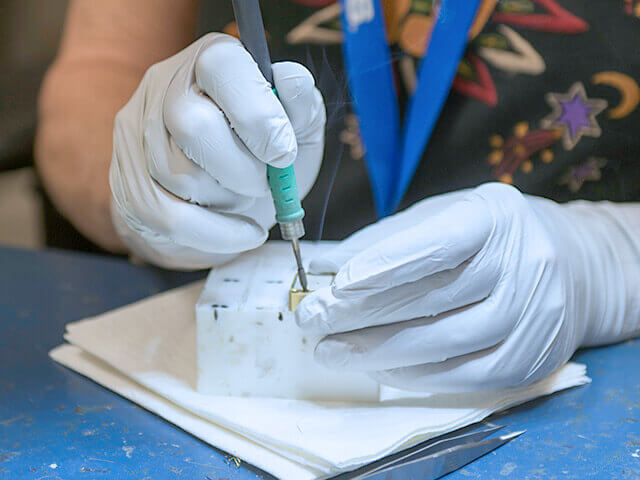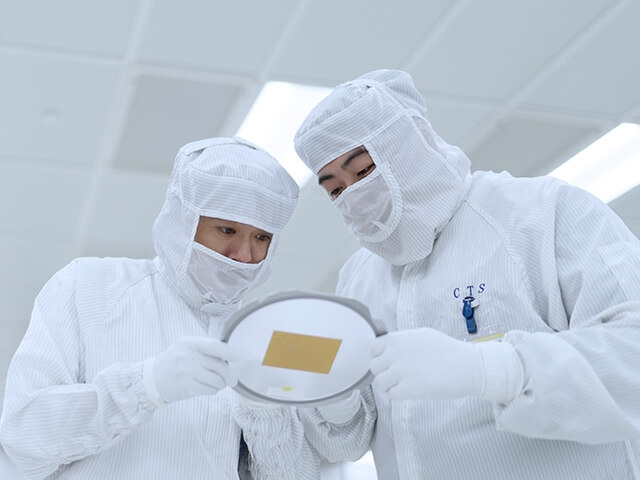Piezoelectric Soldering Procedure

Best Practices for Piezoelectric Soldering Procedures
Soldering electrical wires to the screen-printed silver electrode makes an excellent and time-stable connection. However, occasionally there can be problems with wetting the solder tin on the silver surface and soldering can therefore be difficult.
This phenomenon is mainly caused by a reaction between sulphuric molecules in the atmosphere with the silver surface and the following formation of a silver-sulphide layer on the surface of the part. The formation and height of this layer is influenced by several factors such as age, pH, humidity, etc.
In order to avoid such problems completely at any time, it can therefore be considered as good practice to gently clean the external electrodes on the part before soldering. A glass brush or steel wool is very useful for this operation.
We recommend using soldering temperatures between 250 and 325 °C. Silver is soluble in the solder tin, and if the solder time is too long the electrode will completely dissolve in the solder. In order to increase the possible solder time, we recommend using a solder tin with silver content of 2-4 %. Even if the possible solder time is increased with this type of tin, we still recommend that the solder time does not exceed 2-3 seconds, in order to minimize heat transfer to the piezoceramic product an thus avoid the risk of depolarization of the piezoceramic material.
Solder materials
Soldering material must contain Ag. We recommend the following for standard as well as Ultra-high vacuum applications:
96SC Tin/Silver/Copper with multicore flux (Flux type Crystal 400).
Recommended process
The wire is pre-soldered.
The Ag-electrode surface is cleaned with a glass brush to remove oxidation layer.
Soldering iron temperature is approximately “285 °C”.
The electrode surface is pre-soldered as follows:
- A small amount of soldering material is melted at the tip of the soldering iron.
- The soldering iron is held at the electrode surface for approximately 1 second
- More soldering material is applied to form a small circular soldering material spot.
- The pre-soldered wire is placed on top of the circular soldering material spot and soldered together.
- If necessary, more soldering material is applied.

Partner with a Piezoelectric Specialist
CTS can help decide on material properties to deliver products that meet the unique requirements of your project. Work with a technical expert to begin your design today.



